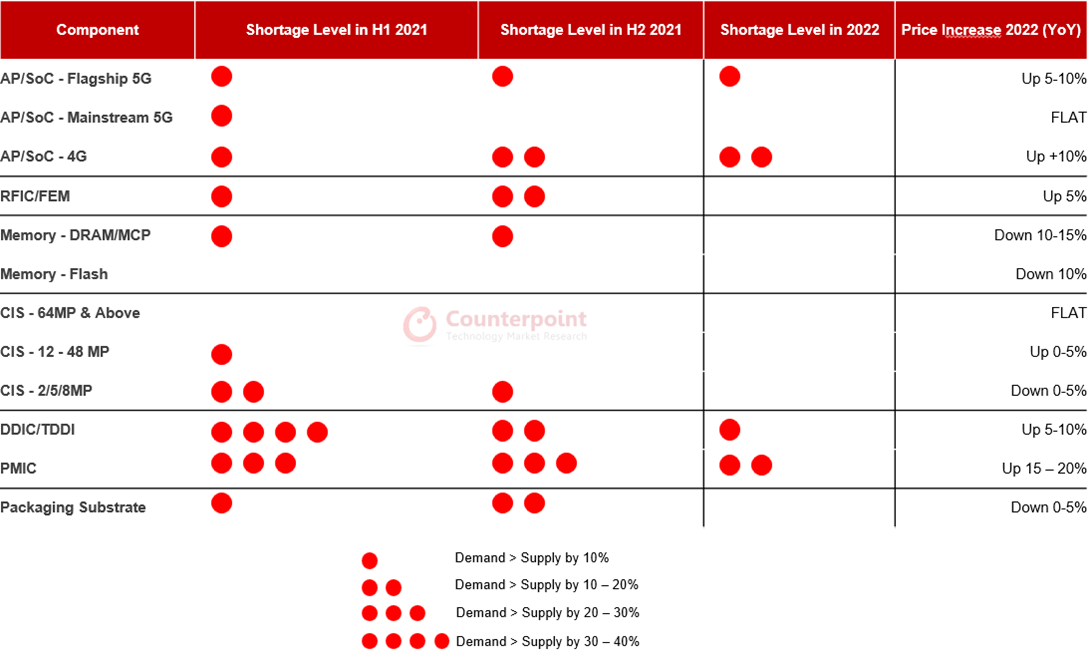The shortage of semiconductors has plagued many industries for more than two years, and now, the problem of core shortages is showing signs of improvement. International Electronic Business News on the 21st, the market survey agency released the results of a survey report on Wednesday local time, showing that as the gap between supply and demand narrows, the semiconductor shortage is expected to continue to ease in the second half of 2022...
International Electronic Business News on the 21st local time, the market research agency Counterpoint Research released the latest smartphone parts tracking report on its official website on the 20th, pointing out that as the supply and demand gap for most components decreases, the global semiconductor chip shortage may be in the second half of 2022. Continue to ease.

The industry is well aware that semiconductor shortages have plagued many industries over the past two years, and suppliers along the global supply chain have spent a lot of energy dealing with supply uncertainty. The report notes that these supply and demand gaps have been narrowing since the end of 2021, implying an end to supply constraints across the ecosystem.
Among them, the inventory of 5G-related chips including mainstream application processors, power amplifiers and RF transceivers has increased significantly.
Of course, there will be some exceptions, such as the previous generation of 4G processors and power management ICs will continue to maintain a tight supply situation.

In terms of personal PCs and notebooks, the supply gap for the most important components of personal PCs, such as power management ICs, Wi-Fi and I/O interface ICs, has narrowed.
"We see OEMs and ODMs continuing to build up component inventories in response to the uncertainty caused by the COVID-19 pandemic. Any downside risks to global shipments will provide further cushion for OEMs." Focused on semiconductors and components Research analyst William Li said he pointed to lower shipments in the first half of 2022, mainly due to higher channel inventory and slower consumer PC momentum. "Combined with the expansion of wafer production and continued diversification of suppliers, we have witnessed a significant improvement in the component supply situation, at least in the first quarter."
He believes that shipments in the first half of 2022 will be lowered, mainly due to increased channel inventory and slowing PC consumption momentum, "As wafer production expands and suppliers continue to diversify, we have witnessed component supply. The significant improvement in the semiconductor industry, at least in the first quarter. Currently, the biggest risk factor for the development of the semiconductor industry is the blockade that occurs across China, especially in and around Shanghai. But if the government can control the epidemic and help the key ecological Systems companies weathered the storm quickly, and we believe the wider semiconductor shortage will ease by the end of the third quarter or early in the fourth quarter."
"In the last year, tight supply coincided with a rebound in demand from consumers and businesses, which created a lot of difficulties for the entire supply chain. But over the past few months, the semiconductor industry has seen weak market demand while inventories continue to build." Counterpoint Research Dale Gai, research director of semiconductors and components, said, “The problem is not the shortage of chips, but the impact of the national lockdown policy on the ecosystem. Right now, we are seeing a series of domino effects from the lockdown policy in China.

